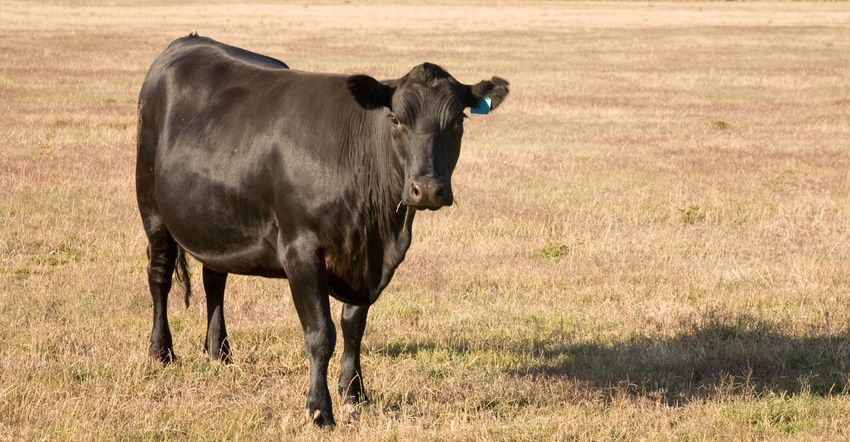August 30, 2021

Agricultural producers impacted by drought can now request haying and grazing on Conservation Reserve Program acres in certain Kansas counties, while still receiving their full rental payment for the land.
“Drought is heavily impacting livestock producers in Kansas and across the country, and emergency haying or grazing of lands enrolled in CRP is one more drought mitigation tool to help producers,” says Zach Ducheneaux, administrator of USDA’s Farm Service Agency. “While CRP makes annual rental payments for land in conservation, under certain circumstances, FSA can allow the haying and grazing of these lands to mitigate the impacts of natural disasters without a reduction in payments. As part of our climate-smart agriculture efforts, we are working with all stakeholder groups to ensure that supplemental benefits of CRP acres, like emergency haying and grazing, can be accessed in a manner that is more universally beneficial.”
Drought relief
Outside of the primary nesting season, emergency haying and grazing of CRP acres may be authorized to provide relief to livestock producers in areas affected by a severe drought or similar natural disaster. The primary nesting season for Kansas ended July 15. Counties are approved for emergency haying and grazing due to drought conditions on a county-by-county basis when a county is designated as level “D2 Drought-Severe” according to the U.S. Drought Monitor.
FSA provides a weekly, online update of eligible counties. As of Aug. 23, Kansas counties eligible included: Cheyenne, Clay, Cloud, Decatur, Gove, Graham, Grant, Greeley, Hamilton, Jewell, Kearny, Lincoln, Logan, Marshall, Mitchell, Morton, Norton, Ottawa, Phillips, Rawlins, Republic, Scott, Sheridan, Sherman, Smith, Stanton, Thomas, Wallace, Washington and Wichita.
Producers interested in emergency haying and grazing on CRP acres should contact FSA to determine if their county is still eligible for emergency authorization. If emergency haying and grazing is still available, producers will need complete a formal request.
Producers can use the CRP acreage under the emergency grazing provisions for their livestock, or may grant another livestock producer use of the CRP acreage.
The how-to
Producers interested in emergency haying or grazing of CRP acres must notify their FSA county office before starting any activities. This includes producers accessing CRP acres held by someone else. To maintain contract compliance, producers must have their conservation plan modified by USDA’s Natural Resources Conservation Service (NRCS).
CRP emergency haying and grazing is available in eligible counties as long as the stand is in condition to support such activity, subject to a modified conservation plan. Hay may be cut once in eligible counties each program year (Oct. 1-Sept. 30). Haying must be concluded prior to Aug. 31 according to an approved conservation plan to allow time for regrowth prior to winter conditions, and it must be removed within 15 calendar days of being baled.
CRP emergency grazing is available in eligible counties as long as it does not exceed 90 days each program year (Oct. 1-Sept. 30). It must be stopped when the minimum grazing height is reached, as established within the modified CRP conservation plan or when the county is no longer eligible for emergency haying and grazing.
Nonemergency option
For producers not in an eligible county, there are options available under nonemergency haying and grazing provisions outside of the primary nesting season, including:
• haying of all CRP practices — except for Conservation Practice 12 Wildlife Food Plots and several tree practices — not more than once every three years for a 25% payment reduction. For nonemergency haying requests, 25% of the requested acreage must be left unhayed.
• grazing of CRP acres not more than every other year for a 25% payment reduction
Livestock Forage Disaster Program
If the Livestock Forage Disaster Program (LFP) triggers in a county for 2021 grazing losses due to drought, the provisions for CRP emergency haying and grazing change. There may be restrictions on grazing carrying capacity, and on which CRP practices can be hayed. Kansas currently has 30 counties where LFPF has triggered and where certain CRP emergency grazing restrictions may apply.
Additional drought assistance
Other programs are available for livestock producers. Producers who experience livestock deaths and feed losses due to natural disasters may be eligible for the Emergency Assistance for Livestock, Honeybees and Farm-Raised FIsh Program (ELAP). This program also provides eligible producers with compensation for expenses associated with transporting water to livestock physically located in a county that is designated as level “D3 Drought-Extreme” according to the Drought Monitor.
More information on disaster assistance programs is available on farmers.gov, including the Disaster Assistance Discovery Tool, Disaster Assistance at a Glance brochure, and Farm Loan DIscovery Tool. These tools can help producers and landowners determine program or loan options. For assistance with a crop insurance claim, producers and landowners should contact their crop insurance agent. For FSA and NRCS programs, they should contact their local USDA Service Center.
Source: The USDA FSA is solely responsible for the information provided and is wholly owned by the source. Informa Business Media and all its subsidiaries are not responsible for any of the content contained in this information asset.
You May Also Like




